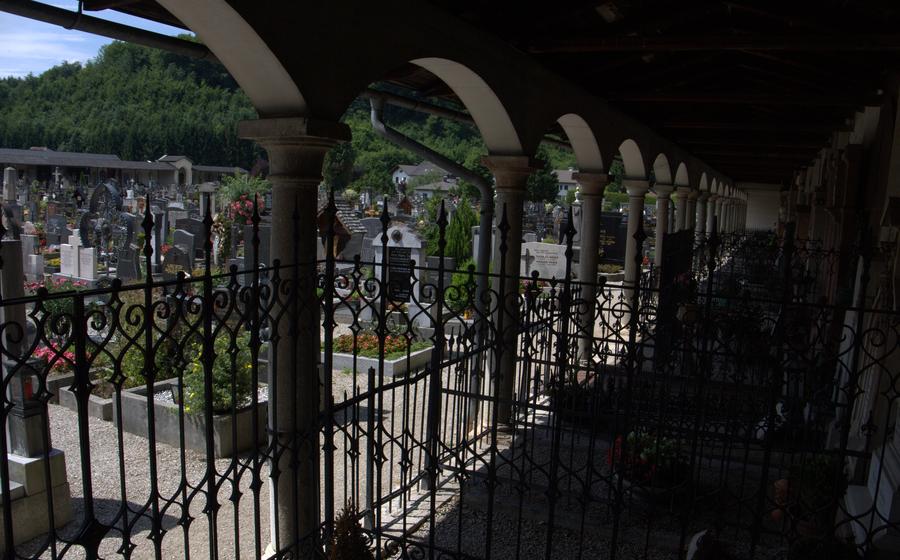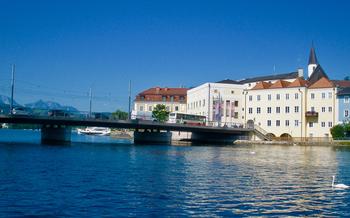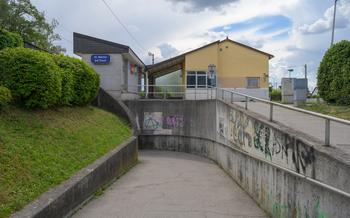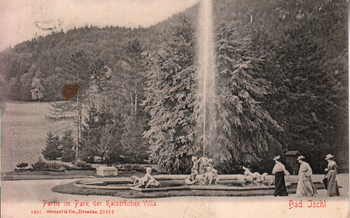
Dachstein Ice Caves
- The Dachstein Ice Caves: A Natural Wonder
- Geological Formation
- History of the Caves
- Unique Features
- Location and Accessibility
- Where are the Dachstein Ice Caves?
- Getting to the Caves by Public Transport or Car
- Parking Facilities
- Guided Tours: A must for a Safe and Informative Experience
- Prepare for an Adventure: What to Wear and Bring
- Immerse in the Icy World: Exploring the Caves
- Discover the History: The Dachstein Giant Ice Cave
- Experience the Dachstein Ice Caves Tour
- Marvel at Nature's Creation: The Ice Palace
- Explore the Mammut Cave: A Hidden Gem
- Unforgettable Views: The Dachstein Panorama
- Interactive Exhibitions: Learning about the Caves
- Combine Adventure with Relaxation: Nearby Activities
- Capture the Memories: Photography Tips
- Insider Tip: Enhance Your Experience
The Dachstein Ice Caves: A Natural Wonder
The Dachstein Ice Caves, located in the heart of the Dachstein Massif in Austria, offer a journey into a subterranean realm of ice and wonder. These caves, formed over thousands of years by the relentless forces of nature, stand as a testament to the Earth's hidden treasures.
Geological Formation
The Dachstein Ice Caves owe their existence to the unique geological makeup of the Dachstein Plateau. Composed primarily of limestone, the plateau has been subjected to millennia of erosion by water, ice, and wind, resulting in the formation of an extensive network of caves and tunnels. The Dachstein Ice Caves are part of this intricate subterranean labyrinth, where water seeps into the rock, freezes, and carves out chambers and galleries of breathtaking beauty.
History of the Caves
The history of the Dachstein Ice Caves is shrouded in mystery and legend. Local folklore tells of courageous explorers who ventured into the caves centuries ago, marveling at the icy wonders that lay hidden beneath the surface. However, it was not until the late 19th century that the caves were systematically explored and documented. In 1890, a team of cavers led by Anton von Posselt-Czorich conducted the first comprehensive survey of the caves, mapping out their vast network of tunnels and chambers.
Unique Features
The Dachstein Ice Caves are renowned for their unique features, which set them apart from other ice caves around the world. The most striking aspect of the caves is the sheer size of the chambers and galleries. The Giant Ice Palace, the largest chamber in the cave system, is a awe-inspiring spectacle, with its towering ice walls and massive ice formations. Another unique feature of the Dachstein Ice Caves is the presence of frozen waterfalls and ice sculptures, which add to the ethereal beauty of the underground world.
Location and Accessibility
Where are the Dachstein Ice Caves?
The Dachstein Ice Caves are nestled in the heart of the Dachstein Glacier, which is part of the Northern Limestone Alps. They are located in the village of Obertraun, in the Austrian state of Upper Austria. The caves are easily accessible from the town of Bad Ischl, which is a popular tourist destination in the Salzkammergut region.
Getting to the Caves by Public Transport or Car
To reach the Dachstein Ice Caves by public transport, you can take a train to the town of Hallstatt and then catch a bus to Obertraun. The bus stop is located right next to the cable car station. From there, you can take the Dachstein Krippenstein cable car to the caves' entrance.
If you are traveling by car, you can take the A1 motorway from Vienna or Salzburg and exit at Bad Ischl. From there, follow the signs to Obertraun and the Dachstein Krippenstein cable car station.
Parking Facilities
There are ample parking facilities available at the Dachstein Krippenstein cable car station. The parking lot is spacious and well-maintained, ensuring that you can safely leave your vehicle while exploring the caves.
Guided Tours: A must for a Safe and Informative Experience
Exploring the Dachstein Ice Caves without a guided tour is not recommended for safety reasons. The caves are vast and complex, with slippery surfaces and potential hazards. Experienced guides ensure a safe and enjoyable experience by leading the way, providing essential information, and answering questions along the route.
Booking a guided tour is simple and can be done online or at the Dachstein Ice Caves ticket office. Tours are available throughout the day, with varying durations and starting times to accommodate different schedules. The guided tours are conducted in multiple languages, including English, German, and others, to cater to international visitors.
The guides are knowledgeable and passionate about the caves. They share insights into the geological formations, historical significance, and unique features of the ice caves. Their expertise enhances the experience, making it both educational and entertaining.
Prepare for an Adventure: What to Wear and Bring
Recommended Clothing and Footwear:
To fully enjoy your visit to the Dachstein Ice Caves, it's essential to dress appropriately. The temperature inside the caves hovers around 0°C, so layers are key. Start with a warm base layer, such as a thermal top and leggings, and add a fleece or sweater on top. A waterproof jacket or windbreaker is also recommended, as the caves can be damp. Choose comfortable, sturdy shoes or hiking boots with good traction, as the cave floors can be slippery. Avoid wearing sandals or open-toed shoes.
Necessary Equipment (Flashlight, Sunglasses, etc.):
While flashlights are provided during the guided tours, it's always a good idea to bring your own headlamp or flashlight as a backup. Sunglasses or goggles are recommended to protect your eyes from the bright reflections off the ice. If you have sensitive eyes, consider bringing ski goggles or glacier glasses for better protection.
Optional Items (Camera, Snacks, Drinks):
If you're a photography enthusiast, don't forget your camera to capture the stunning ice formations. Bring extra batteries and memory cards, as the cold can drain them faster. Snacks and drinks are not allowed inside the caves, but you can bring them along to enjoy after your tour. A small backpack or fanny pack is handy for carrying your essentials.
Immerse in the Icy World: Exploring the Caves
Venturing into the Dachstein Ice Caves is an awe-inspiring experience that takes you through a realm of frozen wonders. As you enter the Giant Ice Palace, the largest chamber in the cave system, you'll be greeted by a breathtaking sight. Towering ice walls adorned with intricate carvings and sculptures create a magical ambiance. The ice formations, shaped by centuries of water dripping and freezing, resemble giant chandeliers, sparkling with an ethereal glow. Frozen waterfalls cascade down from above, creating a symphony of ice and water that echoes through the cavernous space. Marvel at the natural ice art that adorns every corner of the cave, transforming it into an icy masterpiece. Let your imagination run wild as you explore this subterranean kingdom, where nature's artistry is on full display.
Discover the History: The Dachstein Giant Ice Cave
The Dachstein Giant Ice Cave, also known as the Große Eishöhle, holds a significant place in the history of cave exploration and tourism in Austria. Its discovery in 1875 marked a turning point in the understanding and appreciation of the region's natural wonders. The cave quickly gained popularity as a must-see attraction, attracting both curious visitors and renowned scientists eager to unravel its secrets.
Over the years, the cave has played a crucial role in shaping the local folklore and legends. Stories and myths surrounding the cave have been passed down through generations, adding to its allure and mystery. The cave's unique features, such as its frozen waterfalls and ice sculptures, have inspired awe and wonder in visitors, making it a beloved destination for both locals and tourists alike.
In recognition of its exceptional geological and historical value, the Dachstein Giant Ice Cave was designated a Natural Monument in 193This designation ensures the cave's protection and preservation, allowing future generations to experience its icy wonders and appreciate its historical significance.
Experience the Dachstein Ice Caves Tour
The guided tour through the Dachstein Ice Caves is an unforgettable adventure that takes you through a frozen wonderland. As you enter the caves, you'll be amazed by the towering ice walls and glistening formations that surround you. The tour guide will lead you through a series of tunnels and chambers, each with its own unique features.
Highlights of the Tour
-
Frozen Tunnels and Chambers: Wander through narrow tunnels and spacious chambers, marveling at the intricate ice formations that decorate the walls and ceilings.
-
The Ice Slide: Experience the thrill of sliding down a natural ice slide, an exhilarating and unforgettable moment during the tour.
-
Interactive Displays: Learn about the history and geology of the caves through interactive displays and exhibits, providing a deeper understanding of the natural wonders you're witnessing.
Marvel at Nature's Creation: The Ice Palace
Deep within the Dachstein Ice Caves, an awe-inspiring spectacle awaits visitors—the Ice Palace. This magnificent chamber is adorned with intricate ice formations and sculptures that seem to defy imagination. As you enter the palace, you'll be greeted by a dazzling display of frozen wonders. Towering ice pillars, delicate ice crystals, and shimmering ice stalactites and stalagmites create an otherworldly atmosphere that is both awe-inspiring and enchanting.
The centerpiece of the Ice Palace is a massive frozen waterfall that cascades down the walls of the cave, creating a mesmerizing spectacle of ice and light. The water, frozen in mid-flow, seems to defy gravity as it hangs suspended in time. Everywhere you look, you'll find new and breathtaking ice formations, each one a unique work of art created by nature.
The Ice Palace is not just a visual feast; it's also a photographer's paradise. The intricate ice sculptures and the play of light and shadow provide endless opportunities for capturing stunning images. With the right camera settings and a keen eye for composition, you can create breathtaking photographs that will serve as lasting mementos of your visit to this subterranean wonderland.
Explore the Mammut Cave: A Hidden Gem
Alongside the Giant Ice Cave, the Dachstein Caves complex also features the Mammut Cave, a smaller but equally fascinating natural wonder. While the Giant Ice Cave showcases grand ice formations and frozen waterfalls, the Mammut Cave offers a more intimate and adventurous experience.
Geological differences set the Mammut Cave apart from its larger counterpart. Its narrow passages and more intricate ice formations create a unique atmosphere as you navigate through its frozen chambers. The Mammut Cave's smaller size allows for a more personal exploration, providing a sense of exclusivity and discovery.
Similar to the Giant Ice Cave, the Mammut Cave is accessible only through guided tours, ensuring your safety while providing valuable insights into its history and geological significance. As you delve deeper into the cave, you'll encounter stunning ice sculptures, glistening ice crystals, and frozen waterfalls that will leave you in awe of nature's artistry.
Unforgettable Views: The Dachstein Panorama
Emerging from the icy depths of the Dachstein Ice Caves, visitors are greeted with a breathtaking panorama that unfolds before their eyes. The caves' exit offers a viewing platform that presents a mesmerizing spectacle of the surrounding Dachstein region. The majestic peaks, blanketed in pristine snow, rise towards the heavens, forming a picturesque backdrop for the glistening ice fields that stretch out below.
The Dachstein Glacier, one of the largest in the Eastern Alps, commands attention with its towering presence. Its icy expanse, dotted with crevasses and seracs, glistens under the sunlight, creating a mesmerizing play of light and shadow. The surrounding peaks, such as the Hoher Dachstein and the Torstein, provide a stunning backdrop, their rugged silhouettes contrasting with the smooth curves of the glacier.
As the gaze travels beyond the icy realm, the panoramic view encompasses the picturesque landscapes of the Salzkammergut region. Lush green valleys, dotted with charming villages and sparkling lakes, stretch out in all directions. The Dachstein massif, with its imposing presence, dominates the horizon, serving as a majestic guardian of this breathtaking natural wonderland.
Whether capturing the panoramic vistas with a camera or simply immersing oneself in the awe-inspiring beauty, the Dachstein panorama offers an unforgettable experience that leaves visitors with a lasting impression of the region's natural splendor.
Interactive Exhibitions: Learning about the Caves
The Dachstein Ice Caves offer an immersive and educational experience through interactive exhibitions and displays. These exhibits provide visitors with a deeper understanding of the caves' formation, history, and unique geological features. Interactive touchscreens, multimedia presentations, and informative panels shed light on the scientific marvels of the ice caves. Visitors can learn about the forces that shaped the caves over millions of years, the different types of ice formations, and the fascinating creatures that inhabit this subterranean world. These interactive elements transform the visit into a memorable and enriching journey that appeals to visitors of all ages, making the Dachstein Ice Caves a perfect destination for families, school groups, and anyone interested in exploring the wonders of nature.
Combine Adventure with Relaxation: Nearby Activities
A visit to the Dachstein Ice Caves can be effortlessly combined with other thrilling adventures and relaxing experiences in the picturesque Dachstein region. For the adrenaline enthusiasts, the slopes of the Dachstein Glacier offer world-class skiing and snowboarding opportunities, while the surrounding mountains beckon hikers and mountain bikers with their scenic trails. For those seeking a more leisurely experience, the renowned thermal baths of Bad Ischl, just a short drive away, provide a rejuvenating retreat. Additionally, the charming historic town of Hallstatt, nestled on the shores of Lake Hallstatt, is a must-visit for its well-preserved medieval architecture and breathtaking natural surroundings.
Capture the Memories: Photography Tips
Exploring the Dachstein Ice Caves offers ample opportunities for capturing stunning photographs. To make the most of your experience, consider these photography tips:
-
Embrace Low-Light Conditions: The caves are naturally dark, so adjust your camera settings accordingly. Use a tripod to stabilize your camera and avoid blurry images.
-
Highlight Ice Formations: Focus on the intricate ice formations, using a wide-angle lens to capture their grandeur. Experiment with different angles to showcase the unique shapes and textures.
-
Minimize Reflections: Avoid reflections from the ice by using a lens hood or polarizing filter. Adjust your shooting angle to prevent unwanted light sources from entering the frame.
-
Avoid Overexposure: The bright ice can easily lead to overexposed photos. Use a lower ISO setting and expose for the shadows to retain detail in both the ice and the surrounding environment.
Insider Tip: Enhance Your Experience
To make your visit to the Dachstein Ice Caves even more memorable, consider these insider tips:
-
Book a Private Tour: For an exclusive and personalized experience, opt for a private guided tour. This allows you to explore the caves at your own pace, ask questions, and enjoy the undivided attention of your guide.
-
Visit During Off-Peak Hours: To avoid the crowds and have a more intimate experience, plan your visit during off-peak hours, such as early in the morning or late in the afternoon.
-
Combine Your Visit: Combine your visit to the Dachstein Ice Caves with other nearby attractions to make a full day of exploration. Consider visiting the thermal baths of Bad Ischl for a relaxing soak or exploring the historic town of Hallstatt, known for its picturesque landscapes and charming architecture.









